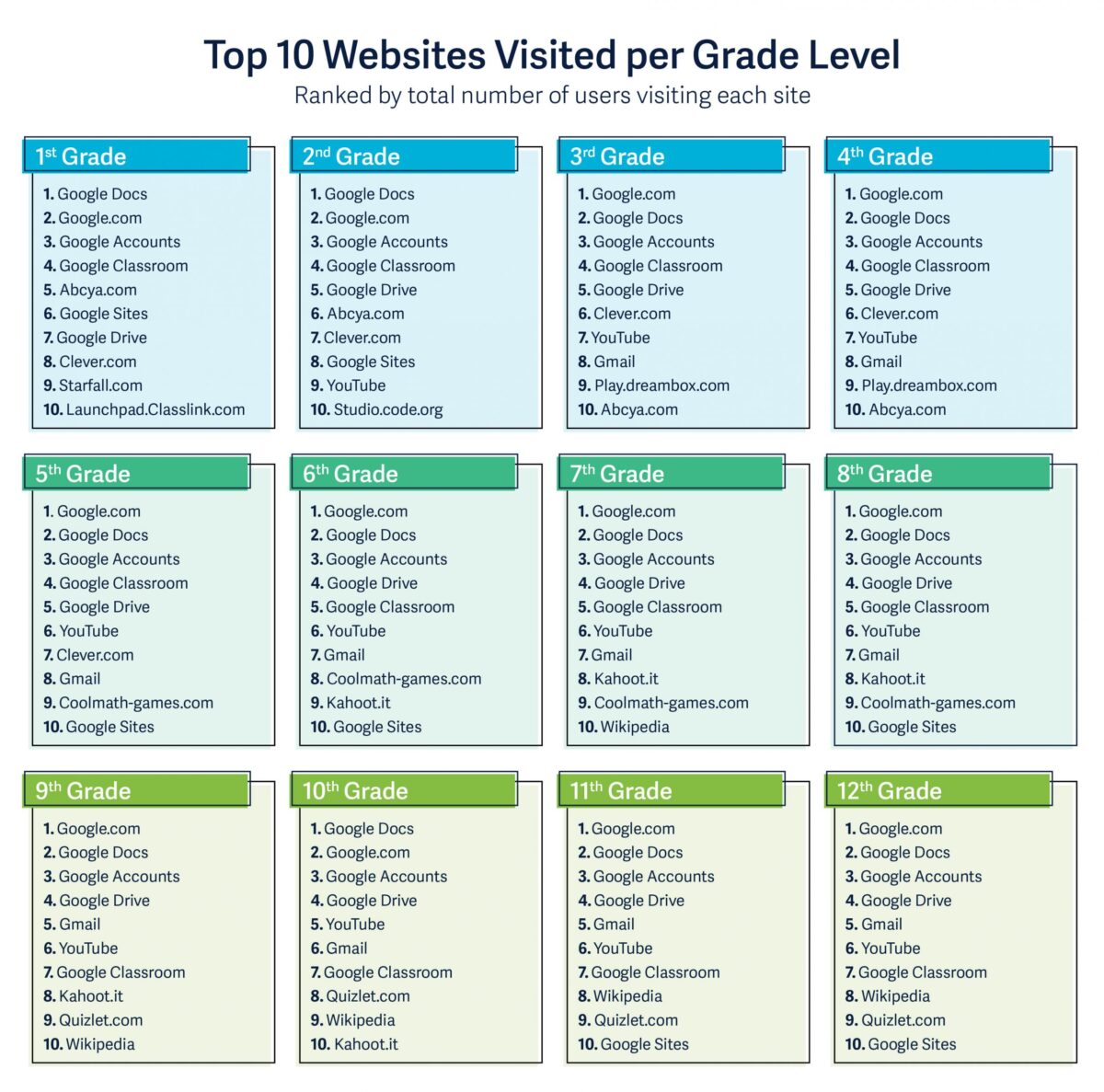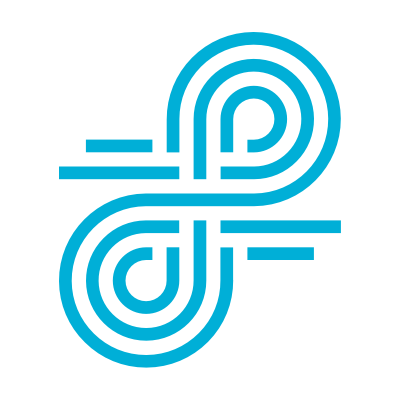What's popular may surprise you
Last year, we told you about most popular websites among K-12 students: We learned Google dominates the K-12 device space — particularly due to the large number of Chromebooks in education — and that education sites are most-visited types of URLs.
We wanted to take a closer look and learn how these browsing behaviors evolve as students age. In this new analysis, we determined the most popular websites for students at every grade level. What we found may surprise you.

Here are our biggest takeaways from the data. Have you experienced similar activity at your school, or noticed interesting device-use trends? Tell us in the comments section below!
1. K-12 students access similar content regardless of age
Digital literacy starts young: 39 percent of 3- to 4-year olds go online. Today, most elementary students begin their K-12 careers armed with devices. We found that the domains students visit are pretty similar across grade levels, with a few exceptions.
Among first and second graders, the most-visited website is Google Docs. Google.com becomes No. 1 as students enter third grade, possibly indicating these students are becoming more independent and seeking information via web search more frequently.
Google Docs makes a resurgence as the No. 1 site for 10th graders. Google.com is a close second.
It’s safe to say Google dominates digital learning, but there is some variety in content consumption.
We see that educational game sites, like StarFall.com and Coolmath-games.com, are used more frequently by young K-12 students. For sixth-graders, Kahoot, a gamified learning platform, makes the top 10.
For ninth-graders, Wikipedia ranks highly, perhaps demonstrating an evolution in these students’ research skills.
It can be difficult for school personnel to identify trends across vast amounts of student data. Luckily, Threat Check in Relay is here to help.
Identifying disconcerting behavior and browsing activity is key to curbing violence, bullying and self-harm. Lightspeed Systems’ No. 1 goal is to keep students safe with technology. With Threat Check, just announced last week, schools get the insights they need to help troubled students and keep schools safe.
Combining online and offline student activity in powerful reports, Threat Check uses data and analytics to identify potential safety threats as well as provide indicators of high-risk students who are escalating toward violence.
2. YouTube popularity rises in second grade
YouTube dominates K-12 video content, and we see it enter the top 10 in the data for second-graders. For fifth-graders, it ranks No. 6 in popularity and ranks highly for upper grade levels, as well. With millions of student visits, YouTube is key to K-12 education in 2018.
But managing appropriate YouTube access can be extremely difficult. Until recently, schools had limited choices:
- allow it
- block it
- rely on YouTube Restricted Mode (which isn’t built for K-12 and fails to filter distracting and non-educational content), or
- create time-consuming playlists for students with only select videos
There’s a better way to manage safe YouTube access for K-12: Smart Play by Lightspeed Systems.
Available in Relay and Web Filter, Smart Play makes it easy to provide appropriate, educational YouTube access to students, leveraging machine-learning AI and our proprietary URL database.
When Smart Play is enabled, students receive an organic YouTube browsing experience without inappropriate and distracting content. Plus it filters inappropriate YouTube videos embedded in other websites.
Not a Lightspeed customer or want to know more? Learn more about Smart Play here and see how easy it is to use in Lightspeed Systems filtering solutions.
3. Google tools are popular; make sure they're safe
Google.com, Google Docs, Google Classroom, Google Drive, Gmail — students are using these powerful tools to research, write, collaborate, and communicate.
It’s important to keep these tools available for learning, but they need to be safe, too. That’s why Relay includes features to:
- Force Google Safe Search
- Filter Google Images
- Restrict access to Google apps
- Block inappropriate Google search terms
- Report on all Google searches
- Flag suspicious or inappropriate content typed into tools like Google Docs and Gmail

